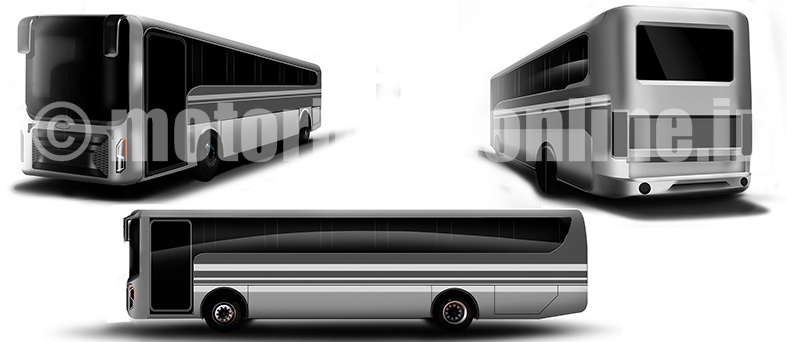“Advanced Structures India (ASI) has designed a family of Bus bodies that can be installed on any chassis ranging from largest (12 meters) Chassis to smallest (9 meters) chassis, available in the market currently. We call our family of bus bodies as the ‘AUK family’. These AUK buses are compliant with the mandatory AIS 052(Code of Practice for Bus Body Design), AIS 023 (Seat Anchorage), AIS 031 (Bus Rollover Protection) & AIS 063 (School Bus). Along with the mandatory regulations the AUK series is ready for frontal impact, interior fittings, exterior projections and many more,” declares Mr. Pratik Kumar Shukla, Principal Engineer, ASI, commenting on the subject topic.

Excerpts:
Mandatory and other safety requirements
We keep safety of the passengers at a much higher priority without escalating weight & cost of the Bus Coach. The Bus code AIS-052 has been implemented by almost all the major players in the Bus industry by now. The unorganised sector associated with the Bus Body manufacturing has also started working towards AIS-052 compliance as individual or in groups. In coming 2-3 years, we believe all unsafe Buses will be wiped out from the market and get replaced by AIS-052 implemented comfortable, rollover protection ready safe buses. The upcoming regulations will include, AIS 052 revisions for double decker and sleeper coaches. There are over 400 accredited bus body builders, in case smaller ones are included, across the country. All the models need to be certified as per requirements of rule 125C of Central Motor Vehicles Rules, 1989. There are over 400 accredited bus body builders, in case smaller ones are included, across the country. All the models need to be certified as per requirements of rule 125C of Central Motor Vehicles Rules, 1989. There are over 400 accredited bus body builders, in case smaller ones are included, across the country. All the models need to be certified as per requirements of rule 125C of Central Motor Vehicles Rules, 1989.
Safety features and highlights in operations
Safety is important and was a missing factor so far in majority of Indian buses. The major factors for fatal bus accidents on roads include inferior quality of materials used, poorly engineered super-structure & interiors, usage of ageing vehicles (15-20 years old) and drivers with no proper trainings.
With Government’s intervention, overall bus industry in India is getting better with time in terms of comfort and safety of passengers. Road quality has improved over the past 5 years, big OEMs are already making safe and comfortable buses (complying to AIS 052). But, still there is a long way to go as un-organized part of the Indian bus industry, which accounts for 60 to 70 per cent, has still not got the AIS-052 clearance certificate.
The Bus Code requires the bus body builders to comply with parameters that improves the safety of passengers in many ways. For e.g., with AIS-052 the bus is strong during roll over & its structure will not intrude inside the residual space (passenger zone) if it rolls on a concrete floor from 800 mm height. Also, in case of a fire, enough space is provided for passengers to exit thorough service or emergency doors. All these parameters will help in bringing down the no of fatalities in case of any accident.
Safety apprehensions at higher road speeds
European countries and the US has high speed limit for buses and trucks as compared to India. They are able to achieve the same due to better road conditions, supporting infrastructure & better engineered vehicles with respect to active & passive safety. The average speed of trucks on Indian roads is too low considering the way we are growing economically. A truck in India can cover only 250-300 km a day compared to 700-800 km in developed countries such as the US and Europe. Hence, the idea of increasing the high-speed limit is wise.
Introduction of new safety regulations, like proper driver training, Use of more electronics like ESP should be mandatory. Secondly either drivers should be trained not to ignore these warnings when displayed, of the vehicles should go into limp mode when these critical safety systems don’t work properly.
Fire hazards safety features
During a fire, the passage should be clear enough to evacuate and there should be enough easy to operate & access fire extinguishers in the vehicle. Also, making all the bus components fire resistant by controlling the burn rate (burn length/ min) the safety against fire can be improved exponentially.
The bus code controls the minimum width of the gangway, distance between seats (Seat Pitch) & minimum dimensions of the emergency exit and the service doors. However, if we package a vehicle as per AIS 052, the children & old people will still have trouble while evacuation. The regulations need to be revised in a way to ensure safety to the old and the children. In AUK family, we have provided enough space b/w seats, in the aisle & large width of Emergency exit. We have placed fire extinguisher along the length of the vehicle at every 1.5 metres also which is easily accessible to a 4 feet height person. This is done in addition to AIS-052 requirements in order to enhance the safety of the bus.
